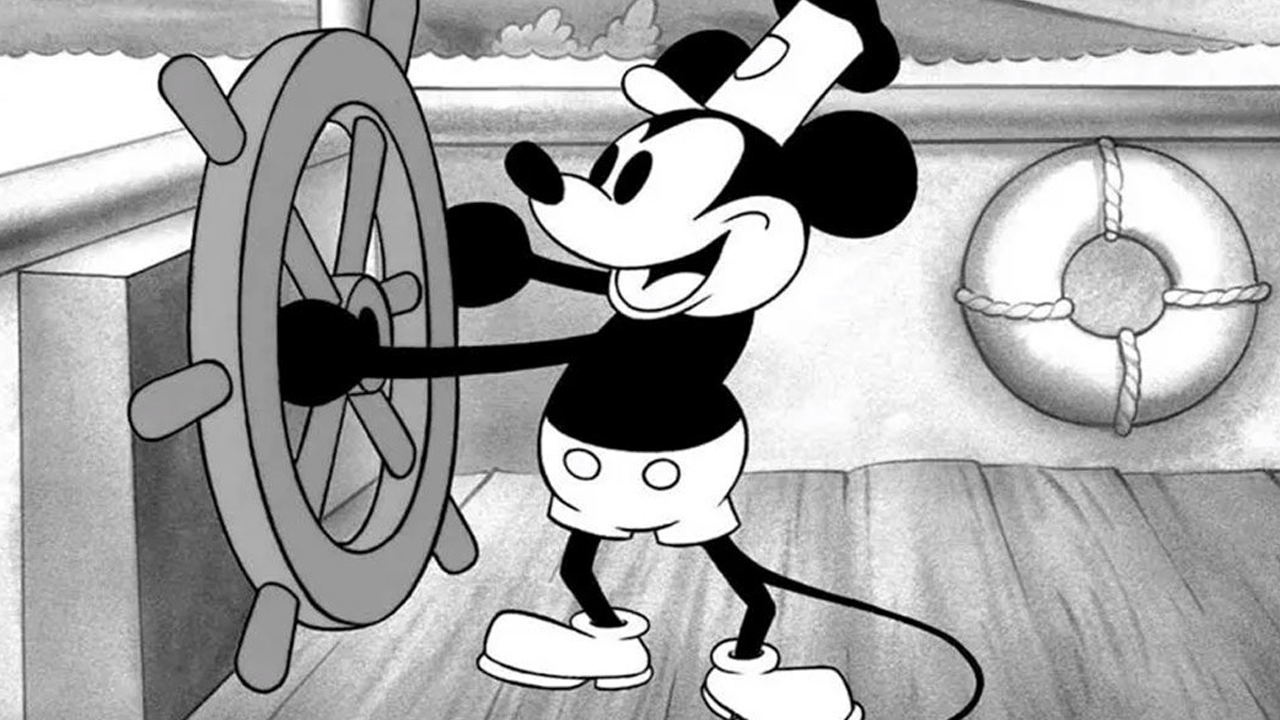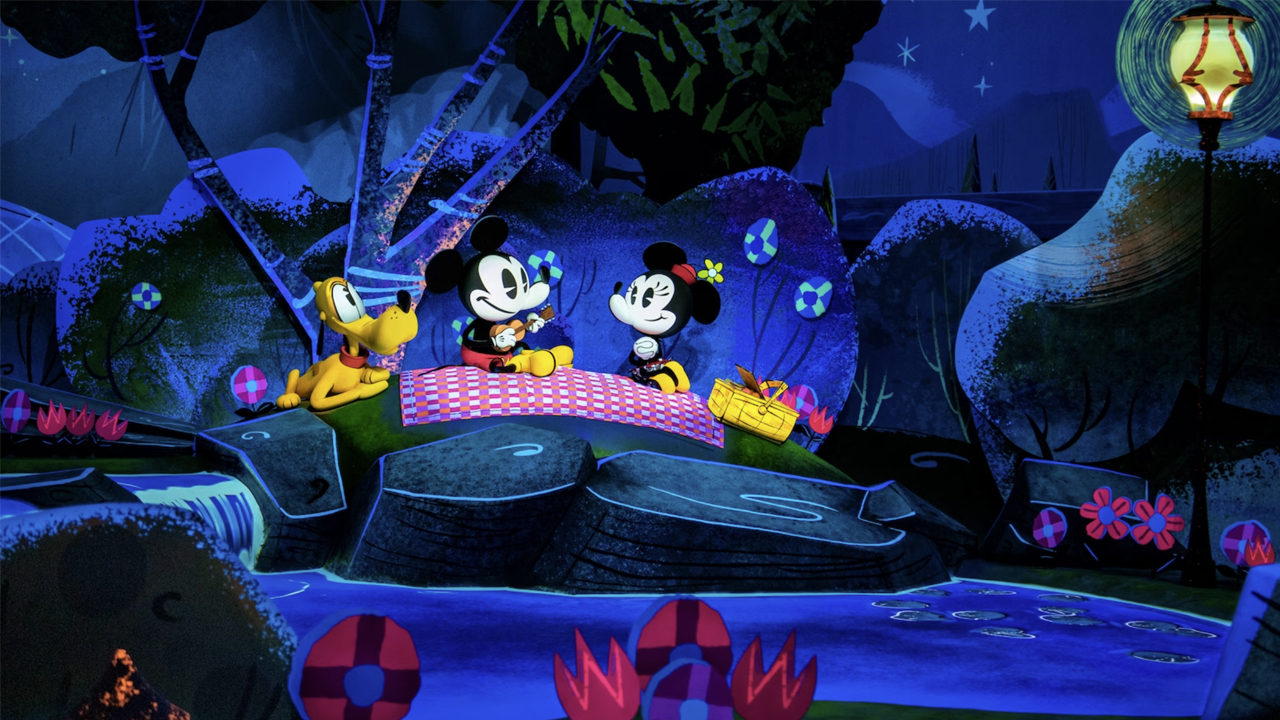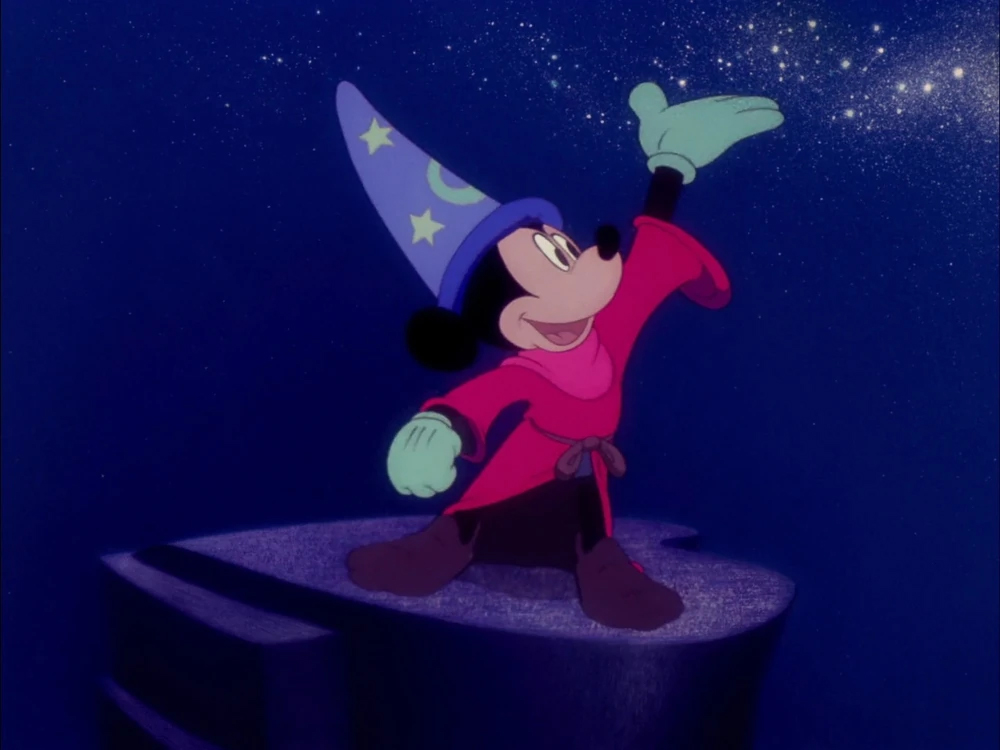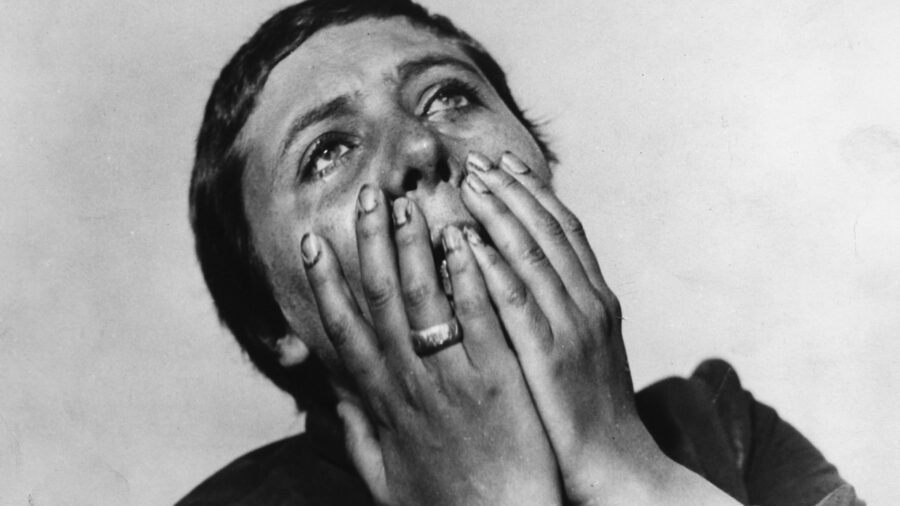

On the 1st of January, Disney’s copyright over their most iconic character expired. After almost a century, the original version of Mickey Mouse is in the public domain, and of course, people are beside themselves with excitement. Why? Because anyone can now use and remake those characters and stories without permission. Is it that simple, though? And what about the trademark rights? Let’s dive deeper into this topic together!
In the feature image above, you see a still from “Steamboat Willie”, a short film that was released in 1928 and featured the silent characters of Mickey and Minnie for the first time. That was also the launching base for Disney’s success, which continues to grow more and more. In 2024, these versions of beloved cartoon mice – along with thousands of other works published in 1928 – entered the United States public domain after their 95-year term had expired. This means we can indeed use them in our films now, but there are some important things to consider.
What happened, in a nutshell?
First, why do we have copyright laws in the first place? Naturally, they let artists explore and create without fearing that someone might steal their artwork. It also preserves their rights, so that in the end, they get paid for what they do.
At the same time, each copyright has a designated coverage period. Once this period ends, the works can enter the public domain. That’s also a vital part of our cultural evolution, allowing us to revisit older material and re-think it in modern terms, fostering ongoing development.
Nevertheless, Disney wanted to retain their exclusive copyright over the iconic Mickey Mouse. So, in 1984, they, along with other supporters, engaged in persistent lobbying efforts to influence the law. Congress passed new Extension Acts, extending copyright protection by an additional 40 years.
Well, time has moved on, and the Steamboat Willie version of Mickey has finally entered the public domain. Why do I emphasize this version of Mickey Mouse? Because the more modern iterations of the famous mouse are still covered by Disney’s copyright. We’ll talk about it in a moment, but let’s first unwrap what the public domain status means.
Mickey Mouse is in the public domain – what does it mean for us?
It means that filmmakers, cartoonists, writers – well, anyone, in fact – can take the earliest black-and-white versions of Mickey and Minnie and use them – build upon them, adapt the material, remix it, or even share the entire “Steamboat Willie” short film on your YouTube channel, as the guys from Corridor Digital did. You don’t need permission from Disney to use it, nor do you need to pay for it.
This also means we will probably be seeing a lot of new creative adaptations of the original Mickey Mouse story. The sky is the limit, really. Have you ever dreamed of animating a horror version of the classic cartoon adventure? Or imagine inviting Minnie as an expert to your YouTube vlog? Anything is possible now. The best part of it is that once the work enters the public domain, it stays there forever.
However, there are a couple of restrictions that you should definitely know about first.
What are the restrictions?
First of all, while Disney lost the copyright over their famous characters, they still possess trademark rights (which, by the way, don’t automatically expire). Mickey is their brand identifier, so you will still see him in the Disney theme parks and on their official merchandise. Does it mean the company can sue you under the trademark law if you make your own Mickey Mouse adaptation?

They can’t, as long as you do not confuse consumers into thinking that your creative work is produced or sponsored by Disney. That’s what the trademark law is about: to prevent the use of a mark on similar products, which misleads people about the product’s source or origin. If you want to be 100% sure, you can always add a disclaimer to your work, stating clearly that it wasn’t produced, endorsed, licensed, or approved by Disney.
Another important point to keep in mind is that only the versions of Mickey and Minnie Mouse from 1928 are in the public domain. Apart from the “Steamboat Willie” cartoon, that includes, for example, the silent versions of “Plane Crazy” and “The Gallopin’ Gaucho”. The later iterations (and there are a lot of them!) are still under copyright, so make sure not to use them. For example, Mickey from “Fantasia” (1940) as The Sorcerer’s Apprentice is still beyond our reach.

Last but not least: the exciting news about Mickey Mouse entering the public domain concerns the US law. Other countries, like the UK, have their own copyright rules so check the expiry dates first if you live outside the United States.
It isn’t only Mickey Mouse who is in the public domain now
As mentioned above, Mickey Mouse is not the only character – although maybe the most famous one – that entered the US public domain on the 1st of January. There are thousands of other famous films, books, music, and classical characters from 1928 that lost copyright protection and are now available to the general public.
Among them, for example, are Charlie Chaplin’s silent comedy “The Circus“, the amazing French historical film “The Passion of Joan of Arc” we mentioned here, the original book “All Quiet on the Western Front” by Erich Maria Remarque, and the German publication of “The Threepenny Opera” by Bertolt Brecht. In the U.S., these works can all now be legally shared, performed, repurposed, built upon, or used in any way.

The huge significance of Mickey Mouse’s character entering the public domain is that it also creates a precedent for other Disney legendary characters that will lose their copyrights in years to come. For example, Pluto will become accessible in 2026, and Donald Duck in 2030.
Why didn’t Disney prevent this from happening?
The question is, if Disney was able to postpone this moment for 40 years straight, why didn’t they do anything this time? We can only guess. There are several reasons, for sure – and the possibility of facing a massive backlash is one of them – but probably, Mickey just wasn’t worth it for them anymore. Of course, he was their main star for many years, but nowadays, Disney is bigger than just one character. Just take into account how many companies they have acquired since 1984 – Pixar, Marvel, Lucasfilm, 21st Century Fox, and Hulu (the most recent acquisition), to name a few.
I don’t think it matters much as to why. The main point is that it happened, and now anyone can draw inspiration for new stories from the original Mickey Mouse. It’s great, isn’t it? What do you think about the most significant public domain arrival in the last few years? Do you have some ideas in mind on how to use these famous characters in your projects? Let’s talk in the comments below!






